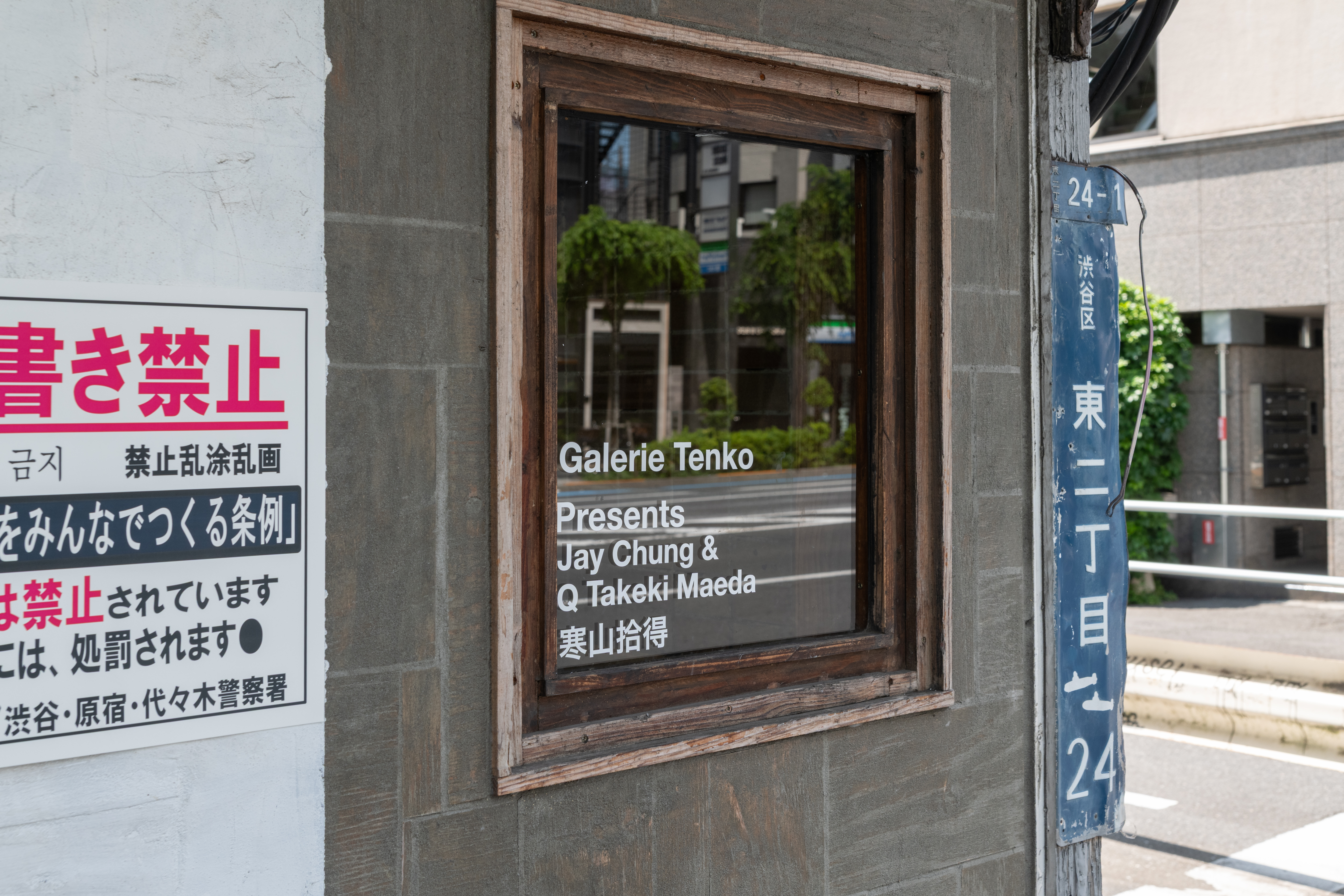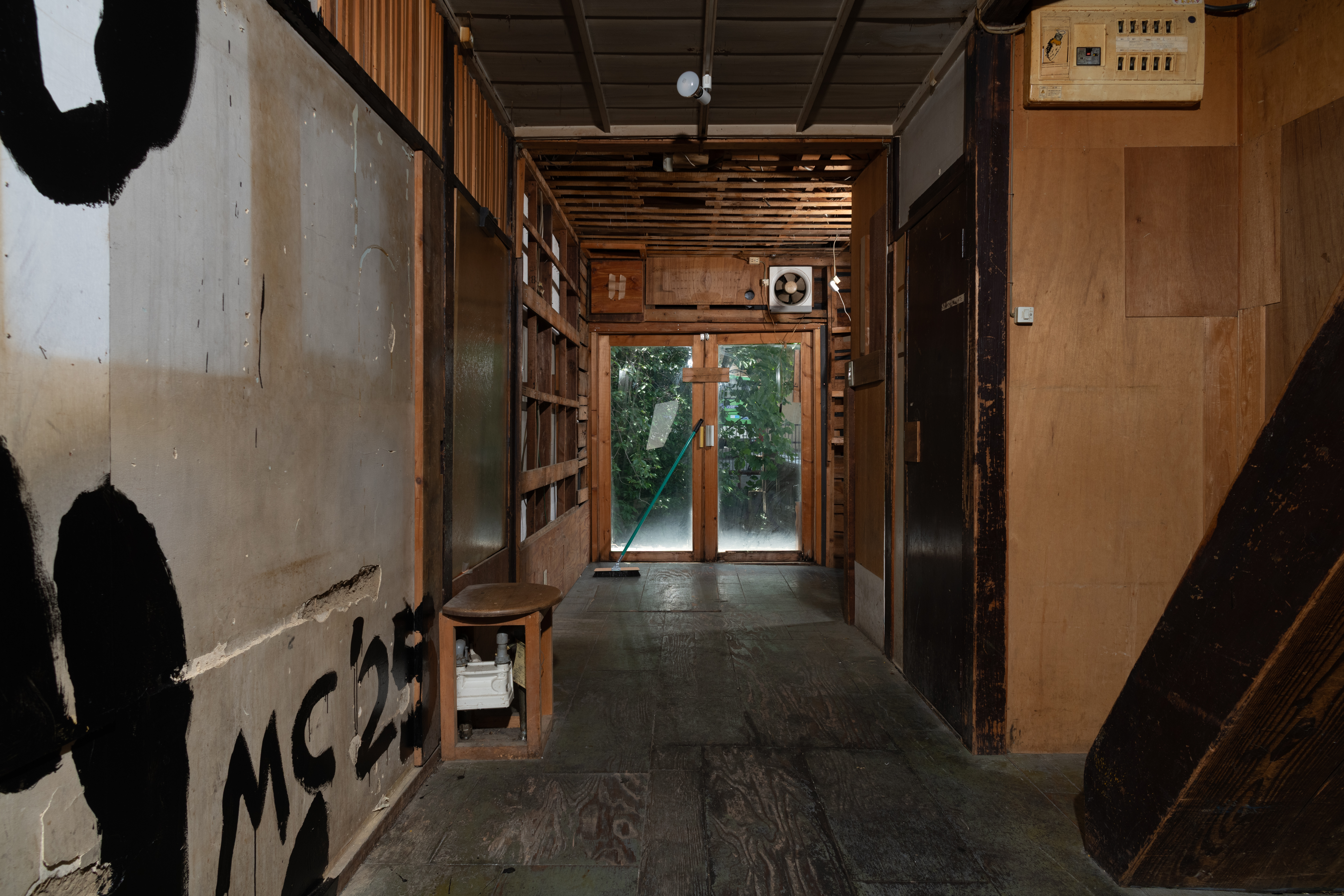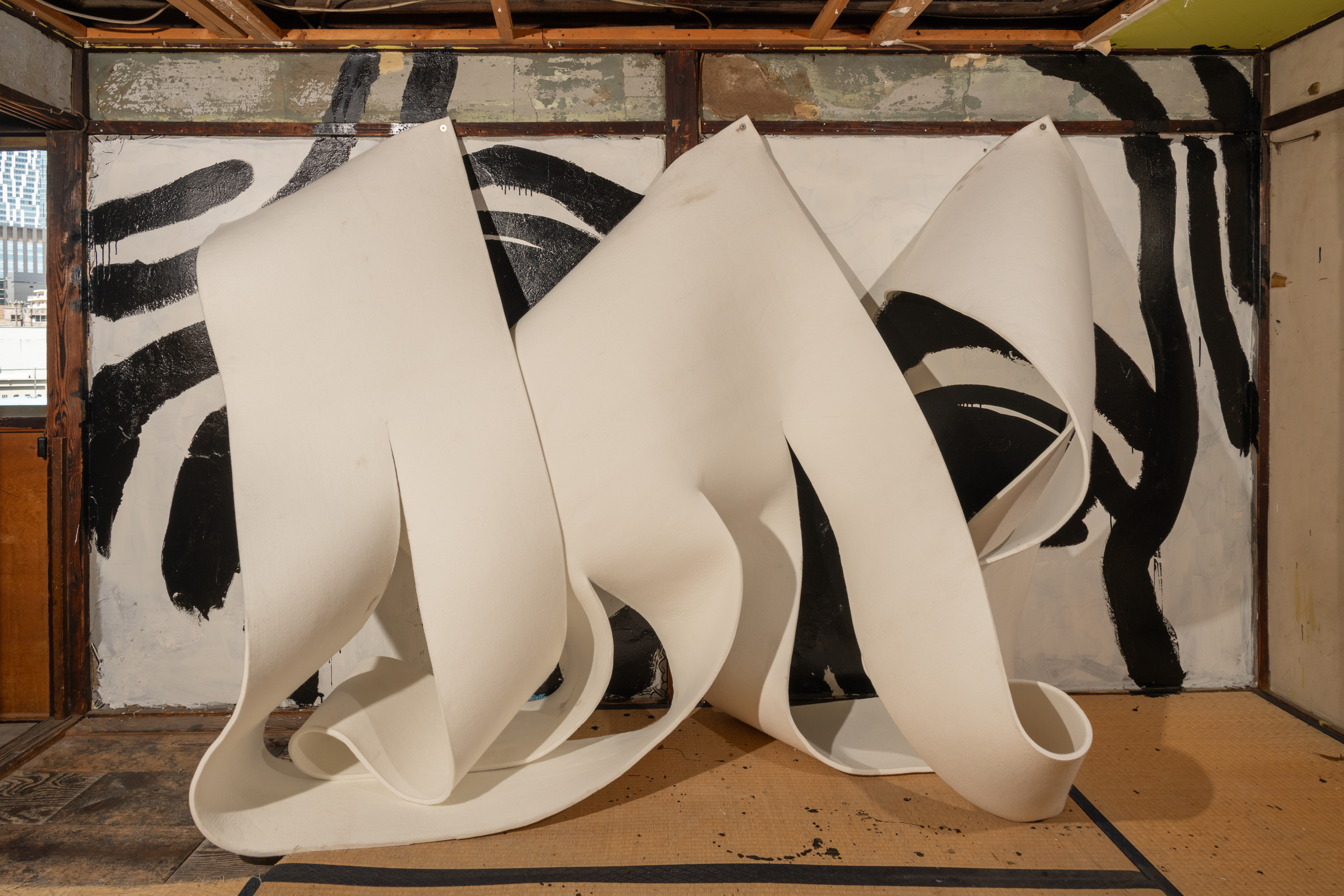Hanshan and Shide
People pass by and say I’ve lost my mind
But the mirror shows an ordinary face
My clothes are plain but in order
They don’t understand what I isay
I refuse to speak their words
This is for those who come
If you understand me come to Cold Mountain
Hanshan and Shide were two figures—poets, hermits, or perhaps anarchists—believed to have lived during China’s Tang dynasty (618–907). Their words were compiled into a collection known as the Cold Mountain Poems, which has been read and re-read for over a thousand years. And yet, their names have never been counted among the canonical lineage of Chinese literary history, nor have they exerted a significant influence on classical Chinese literature.
The origins of the Cold Mountain Poems remain the subject of debate. The most widely cited account attributes the compilation to a man named Lüqiu Yin, who is said to have ordered a monk of Guoqing Temple on Mount Tiantai to assemble the verses into a single volume, to which he added a preface. However, Lüqiu Yin—who introduces himself in the preface with a long and grandiloquent list of titles—cannot be confirmed as a historical figure. Another theory credits the compilation to a man named Juelingfu, also associated with Mount Tiantai, who is said to have edited the poems into three volumes and written a separate preface in the early 9th century. Yet another version suggests the collection was assembled by the Chan monk Caoshan Benji. The exact circumstances of its compilation remain unclear. What is certain, however, is that the poems themselves survive.
When the two were together, the air seemed to ripple ever so slightly. They shared something between them, though no one could say what it was. Their voices were low—not quite eerie, but no one knew why they laughed. Their words were left on bamboo and tree trunks, on the stones, on the walls of village houses and on the plaster of old shrines.Later, someone gathered them, counted them, and called them poems.
One had a plum tree in his garden, a family, books—everything. Then one day, he walked away from it all. Sometimes he appeared at the monastery, scavenging for leftovers, then vanish into the mountains. The other was taken in by a monk, given a place at the stove, and swept the ashes. They say his name meant “the one who was picked up.” But perhaps it meant something else—The one who collects what others leave unwritten.
Thus transmitted across time, the figures of Hanshan and Shide eventually emerged as enduring subjects in the visual arts. However, during the Song dynasty (960–1279) in China, themes centered on landscapes and birds-and-flowers—highly prized for their aesthetic appeal—came to dominate the pictorial tradition, gradually pushing religious figures and subjects to the margins of artistic representation.
From these margins, the theme found its way to Japan, where it was quietly revived. Over the course of the Kamakura period, it took root, and by the Muromachi period, numerous “Hanshan and Shide” images were being created by monk-painters.
Among the most frequently cited models were works attributed to Yan Hui (unknown), a court painter active during the Yuan dynasty (1279–1368). In his diptych, the two figures appear with crescent-shaped eyes and mouths, disheveled hair, orderly rows of teeth, and smiles tinged withsomething uncanny. This iconography was repeatedly plagiarized and reinterpreted by later generations of painters. Prominent painters such as those from the Kano school, as well as Tawaraya Sōtatsu, Ogata Kōrin, Hakuin Ekaku, Yosa Buson, and Brice Marden, all took up the theme. More recently, Tadanori Yokoo has explored and reinterpreted it through his fascination with the eccentric mid-Edo painter Soga Shōhaku (1730–1781), who also depicted the pair. In these paintings, Hanshan is often shown holding a scroll, and Shide a broom—a motif that persists throughout the centuries.
The subject also made deep inroads into literature. From Matsuo Bashō, Mori Ōgai, Natsume Sōseki, Akutagawa Ryūnosuke, Ibuse Masuji, and Okamoto Kanoko, to Gary Snyder, Jack Kerouac, and Karatani Kōjin, writers across times and cultural contexts have repeatedly returned to Hanshan and Shide, invoking their names in poems, stories, and critical texts.
All these recurring images—in both art and literature—can ultimately be traced back to Lüqiu Yin’s preface, where their story was first shaped. Yet recent scholarship suggests another possibility: that “Hanshan” and “Shide” may not have referred to individual historical figures, but names collectively adopted by a loosely affiliated group of poets and literati. Under these names, successive generations projected their own ideals, disillusionments, and beliefs. Over time, the strange figures that emerged came to embody not two eccentric individuals, but a kind of poetic fellowship—one shaped by the layering of countless anonymous voices across the centuries.
寒山拾得
通りすがり 人が私を見て
気が触れていると言った
鏡に よくある顔が映っている
服もちゃんと着ている
私 言葉を彼ら 理解しない
彼ら 言葉を私 口にしない
道を往来する人にお知らせする
私を理解したいなら
寒山に来られよ
寒山拾得(かんざんじっとく) 、唐代(618〜907年)に実在したとされる二人 詩人、隠者、また アナーキストである。彼ら 言葉 詩集『寒山詩』に編まれ、千年以上にわたり読み継がれてきた。しかしながら、中国史上において彼ら 名が正統 系譜に並ぶこと 一度もなく、また中国古典文学にも主要な影響が見られない。
『寒山詩』がいかにして成立したかについて 諸説ある。最も広く知られている 、閭丘胤(りょきゅういん)という人物が、天台山・国清寺 僧に命じて一巻に編纂させ、自ら序文を添えたとされるも 。ただし、そ 序文において、長く仰々しい肩書きと共に現れる閭丘胤自身、実在 記録 ない。また別 説によれ 、同じく天台山にいた除霊府という人物が、9世紀初頭に詩を三巻にまとめ、序文を添えたとも伝えられている。さらに、禅僧・曹山本寂(そうざんほんじゃく)による蒐集説とも伝わっており、編纂 経緯について 定かでない。確かな、詩集そ も が現存しているという事のみである。
ふたり揃うと、空気 微かに波打った。彼ら 何かを静かに分け合っていたが、それが何であるかを知る者 いなかった。声 小さく、不気味というほどで なかったが、誰も彼らがなぜ笑っている かを知らなかった。ふたり 言葉 、竹や木 幹に、岩 表面に、村 人家に、祠堂 壁に書き散らされていた。それら 集められ、数えられ、ちに詩と呼 れるようになった。
ひとり 庭に梅 木があり、家族と書、すべてを持っていたが、ある日、それらをすべて放って消え去った。ときおり寺 敷地に姿を見せ、残飯を漁って、また忽然と姿を山中に消した。もうひとり 、高僧に拾われて寺に迎えられ、かまど 番をし、灰を掃いていた。そ 名 「拾い得た」ことにちなむというが、それ 、むしろ「書き落とされた詩を拾い集める者」という意味を託された名かもしれない。
こうして伝えられた寒山拾得 、やがて絵画 なかでも表現される主題となった。しかし中国・宋代(960–1279年)に 、山水や花鳥といった鑑賞性 高い主題が主流となり、宗教にまつわる人物像 、次第に絵画 中心から遠ざけられていった。画壇から追いやられた主題 やがて日本に伝来し、息を吹き返した。鎌倉時代を通じてそ 表現が根づき、室町期になると、画僧たちによって数多く 「寒山拾得図」が生み出される。
その際、頻繁に手本とされた 、中国・元代(1279–1368年) 宮廷絵師・顔輝(がんき) 作品である。一双形で描かれた二人 姿 、三日月型 目と口、ボサボサ 髪、整った歯並び、そしてどこか妖気を帯びた微笑みをたたえていた。こ 形式 、後世 絵師たちによって、繰り返し剽窃され、変奏されながら伝えられていった。狩野派を じめ、俵屋宗達、尾形光琳、白隠慧鶴、与謝蕪村、ブライス・マーデンなどといった名だたる画家がこ 主題に挑み、近年で 横尾忠則が、江戸中期 無頼 絵師・曽我蕭白(1730–81年)による寒山拾得図に深く魅せられ、そ 再解釈を試みている。これら 絵 中で、寒山 巻物を、拾得 箒を手にする姿で繰り返し描かれている。
さらにこ 主題 、文学 領域にも深く浸透していく。松尾芭蕉、森鴎外、夏目漱石、芥川龍之介、井伏鱒二、岡本か 子からゲーリー・シュナイダー、ジャック・ケルアック、柄谷行人に至るまで、時代や文化圏を超えて数多く 文人が寒山拾得に関心を寄せ、詩や小説、評論 中でそ 名を言及している。
こうした文学と絵画に繰り返し現れる寒山拾得 姿 、すべて元をたどれ 閭丘胤 序文を起源としている。しかし、最新 研究 異なる可能性を仄めかしている。「寒山」と「拾得」という名 、個別 実在した人物を指すで なく、当時 詩僧や文人たちが緩やかに連なって形成した、一種 グループを表す名称だった。こ 名もとに、人々 そ 時々 理想や幻滅、信念を投影していった。そ 結果として、生まれた二人 奇人 イメージ 、そ 名 背後に隠された無数 声が時を越えて重なりあった、ひとつ 詩的な共同体とも呼ぶべき存在となっていった である。
Curated by Tenko Nakajima





.


